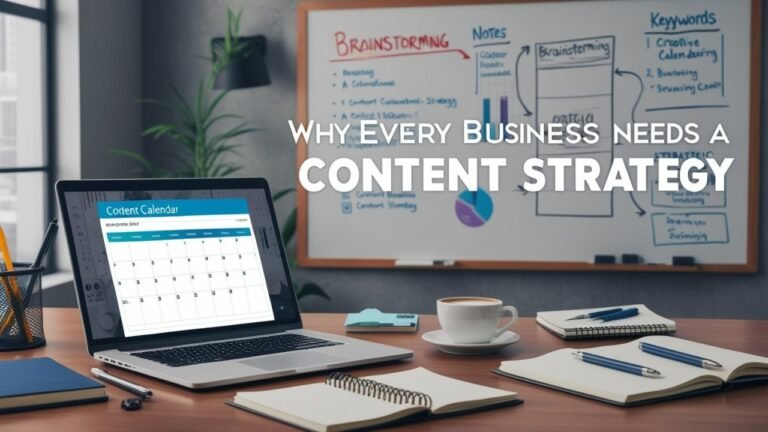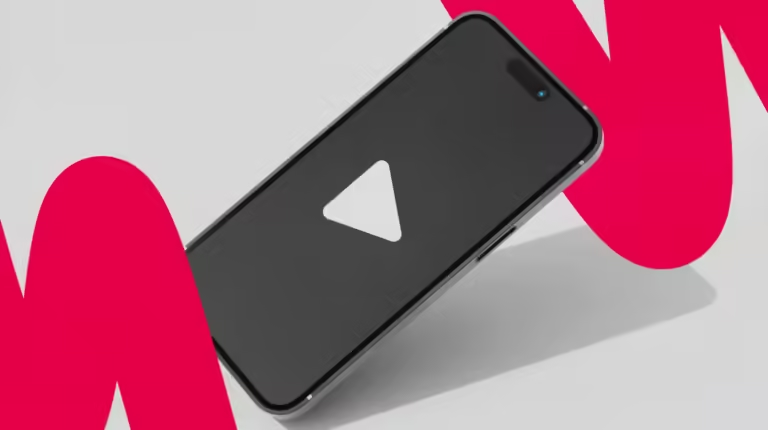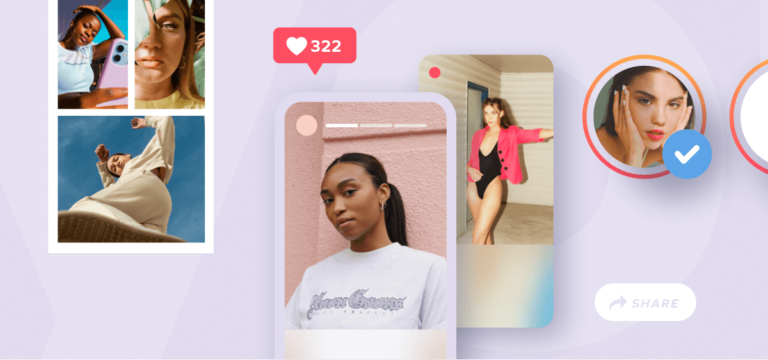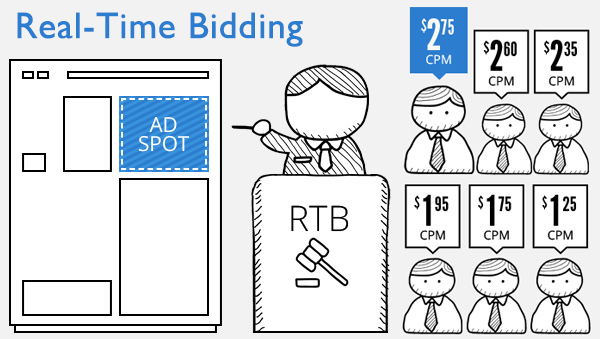Why Vertical Video is Taking Over in Business
Vertical video is no longer just a passing trend—it’s become a staple in how we consume content. With the dominance of smartphones and platforms like TikTok, Instagram Reels, and YouTube Shorts, the vertical video format is shaping the future of content creation.
Why? Because people love convenience. Nearly 94% of mobile users hold their phones vertically. When you combine that with how often we consume content on-the-go, it’s no surprise that vertical videos are now the preferred video format.
This shift isn’t just about comfort—it’s about performance. Vertical videos consistently see up to 90% more engagement compared to horizontal videos. They’re immersive, easy to watch, and tailored to how we interact with our mobile devices.
For professionals, the rise of vertical video means it’s time to adapt. Whether you’re in video marketing, advertising, or content strategy, embracing the vertical-first mindset will keep you ahead of the competition.

Mashable
Let’s explore why vertical video is taking over and how you can leverage this format to create content that resonates with modern audiences.
What is Vertical Video?
Vertical video is a video format where the height is greater than the width, typically using a 9:16 aspect ratio. This format is specifically designed for mobile devices, as it matches how people naturally hold their phones—vertically. Unlike traditional horizontal videos, which are optimized for TVs or computer screens, vertical videos fill the entire screen on mobile devices, creating an immersive and distraction-free experience.
This format is widely used on platforms like TikTok, Instagram Reels, YouTube Shorts, and Snapchat, where the majority of users consume content on their smartphones. Vertical video has become the dominant format because it caters to mobile-first audiences and aligns perfectly with their viewing habits.
The Rise of Vertical Video in Content Creation

If you’ve scrolled through your phone today, chances are you’ve already interacted with a vertical video. Whether it was a TikTok trend, an Instagram Reel, or a YouTube Short, this vertical video format dominates the way we now consume content.
So, why is this happening?
Mobile First, Always
Mobile devices are the driving force behind this shift. With billions of people holding their phones vertically 94% of the time, it’s only natural for content creators to adapt. Watching horizontal video requires effort—flipping your phone and dealing with a smaller screen. Vertical videos solve that problem by taking up the entire screen, offering a full, immersive experience with no distractions.
Platforms Like TikTok and Instagram Lead the Way
Social media giants like TikTok, Instagram, and YouTube Shorts have completely adapted to the vertical orientation. They’ve optimized their interfaces for vertical videos, and their algorithms actively promote this content format. If you want your content to perform, vertical videos are your best bet to reach mobile users.
Content Creation That Resonates
The rise of vertical video isn’t just about how people hold their phones—it’s about connecting with audiences in a format they prefer. This content format makes it easier to tell quick, engaging stories that keep viewers watching.
The adoption of vertical video isn’t a trend—it’s a natural response to how we live in a mobile-first world. To stay relevant, brands and creators need to fully embrace vertical video.
Why Vertical Videos Outperform Traditional Horizontal Formats
Here’s the truth: vertical videos are designed for how we actually interact with our phones. Unlike the traditional horizontal video, which was made for TV screens, the vertical video format feels natural on a mobile device. And it’s not just convenient—it’s effective.
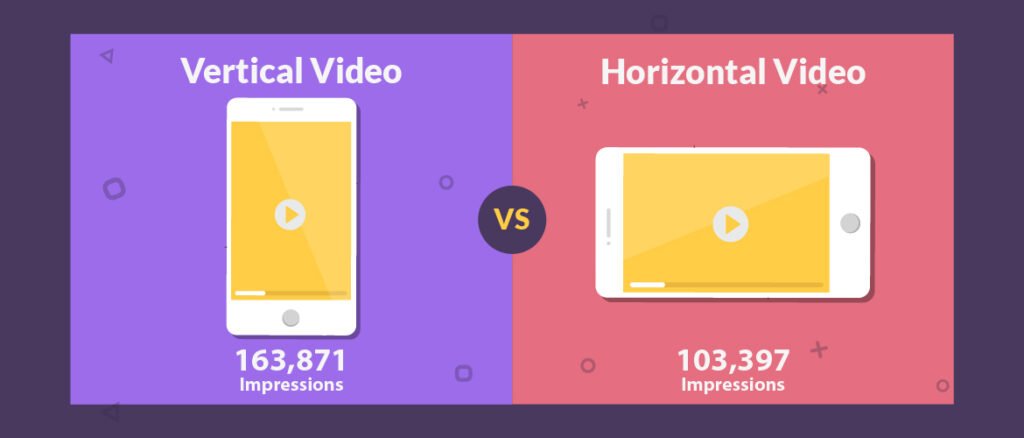
Animaker
The Immersive Nature of Vertical Videos
When you watch a vertical video, it fills the entire screen of your mobile device. There’s no blank space or distraction. This immersive experience keeps the viewer focused solely on the content. Whether it’s a quick Instagram Reel or an ad on TikTok, vertical videos are great at grabbing attention and holding it.
Performance: Vertical vs. Horizontal
Numbers don’t lie. Studies show that vertical videos generate 90% higher engagement rates compared to horizontal videos on mobile. Why? Because they’re easier to consume. When your audience doesn’t have to turn their phone, they’re more likely to stick around and watch.
Why Engagement Matters
Engagement is the holy grail of video marketing. The more people interact with your content—by watching, liking, or sharing—the more visible it becomes on social media platforms. Since platforms like TikTok and Instagram prioritize high-performing content, your vertical video is more likely to reach a wider audience.
The advantages of vertical video go beyond convenience. Its immersive, full-screen nature delivers better results than the traditional horizontal video, making it the ultimate choice for content creators and marketers.
How Social Media Platforms Are Driving the Vertical Video Trend
It’s no coincidence that vertical video has taken over—social media platforms are actively driving this change. With billions of users spending hours scrolling through apps like TikTok, Instagram, and YouTube Shorts, these platforms have prioritized vertical content to match the way people naturally consume media.
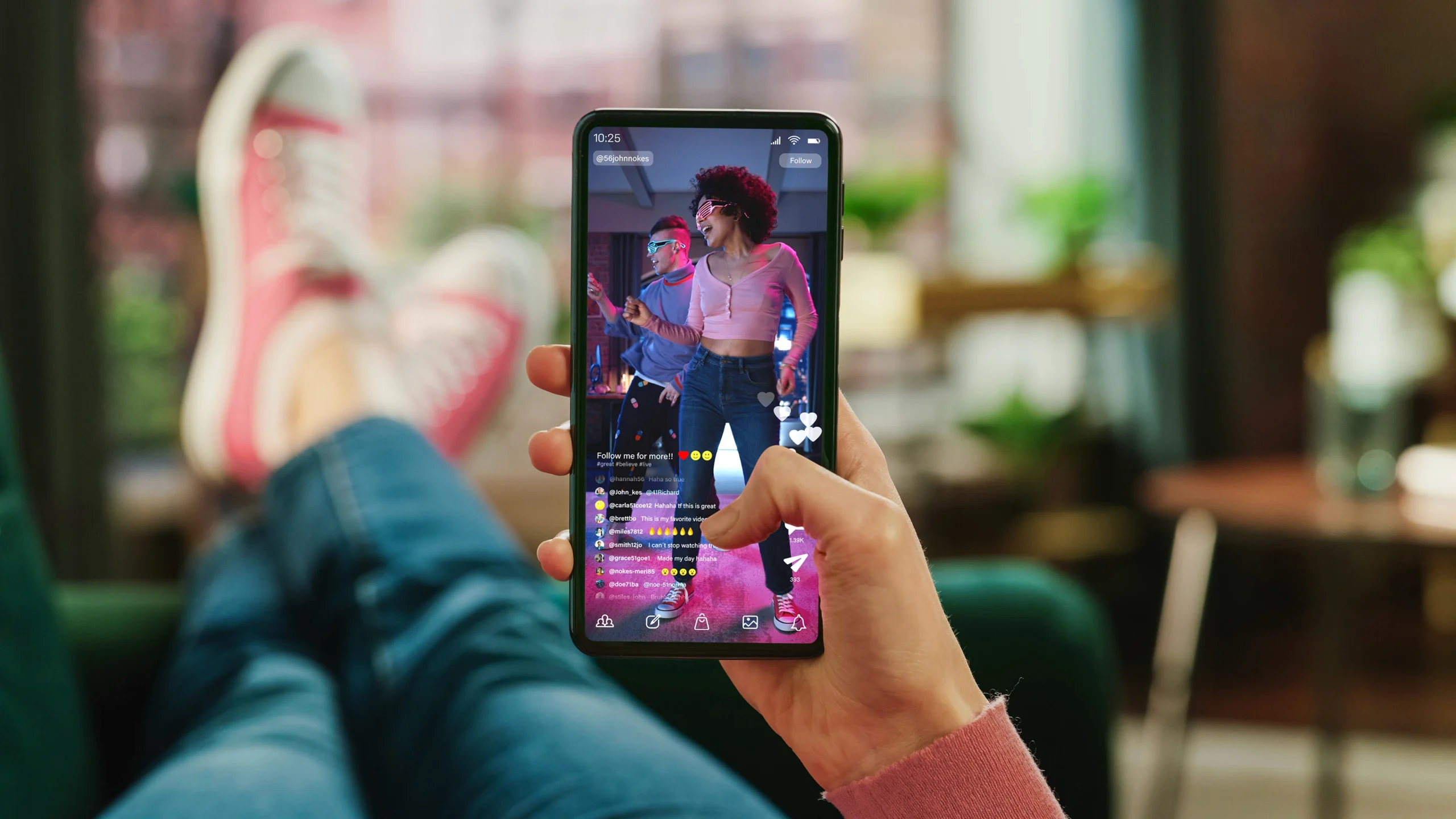
Creative Olsen
Why Social Media Platforms Favor Vertical Videos
Platforms like TikTok were built around the vertical video format from day one, creating a seamless experience for mobile users. Instagram quickly followed suit, shifting its focus to Reels, while YouTube introduced Shorts to stay competitive. These platforms don’t just support vertical video—they encourage it. Their algorithms prioritize vertical formats because they lead to higher engagement.
Vertical Video Ads Are Winning
Advertisers have also jumped on board. Vertical video ads are more effective than traditional formats, delivering higher click-through rates and better brand recall. Why? Because vertical ads blend naturally into social feeds, making them feel less like an interruption and more like content people want to watch.
The Role of Mobile Users
With the majority of social media users accessing platforms on their phones, vertical content just makes sense. Whether it’s a 15-second TikTok or a 30-second Instagram ad, vertical videos are optimized for how we scroll, watch, and engage.
Social media platforms aren’t just adapting to vertical video—they’re driving its dominance. If you want your content to thrive, aligning with their focus on vertical formats is non-negotiable.
Creating Compelling Vertical Video Content
The good news is, you don’t need a big-budget production to make vertical videos that grab attention. With the right strategy, tools, and creativity, anyone can create vertical videos that resonate with their audience and perform well on social media platforms.
Start With a Mobile-First Mindset
Since vertical videos are made for mobile users, focus on creating content that feels natural on a phone. Use the full 9:16 aspect ratio to fill the screen and ensure every visual element is optimized for vertical viewing. Think about how your audience consumes content—quick, eye-catching videos are key.
Focus on Storytelling
The best vertical videos don’t just look good—they tell a story. Whether you’re showcasing a product, promoting a service, or sharing a message, keep it clear and concise. Remember, attention spans are short, so aim to hook your audience in the first 3 seconds.
Leverage Video Editing Tools
Creating vertical content doesn’t require expensive software. There are plenty of video editing tools designed for vertical formats, such as CapCut, Canva, and Adobe Premiere Rush. These tools make it easy to add text overlays, transitions, and effects that enhance your video.
Use Engaging Visuals and Sounds
A strong vertical video relies on visuals and audio to keep the viewer engaged. Use bold colors, clear text, and captivating visuals to draw attention. Pair that with music or sound effects that match the tone of your video for maximum impact.
Quick Tips for Effective Vertical Video Creation:
- Keep videos under 60 seconds for platforms like TikTok and Instagram Reels.
- Add subtitles or captions for viewers watching without sound.
- Use vertical-friendly transitions to maintain a seamless flow.
Creating great vertical videos is all about adapting to how people consume content. With a focus on storytelling, visuals, and mobile-first design, you can craft videos that not only grab attention but also drive results.
Why Vertical Video Is Essential for Modern Marketing
Vertical video isn’t just another content trend—it’s a game-changer for marketers looking to stay relevant in a mobile-first world. The shift to short, vertical content has opened up endless opportunities to connect with audiences in a way that feels authentic and engaging.

IMPACT Branding & Design
Reach Younger Audiences
If your goal is to connect with Gen Z and Millennials, vertical video is your golden ticket. Platforms like TikTok, Instagram Reels, and YouTube Shorts are their go-to spaces, and vertical content is what they engage with most. Creating vertical videos designed for these platforms helps brands meet younger audiences where they are.
Maximize Engagement
The data speaks for itself—vertical videos consistently outperform horizontal formats in terms of engagement. From higher completion rates to increased shares, vertical video delivers better ROI for video marketing campaigns. When your content fits naturally into social feeds, it doesn’t feel like an ad—it feels like something worth watching.
Strengthen Brand Presence
Vertical videos are perfect for showcasing your brand’s personality. Whether it’s through behind-the-scenes clips, product tutorials, or user-generated content, vertical formats allow for quick, digestible videos that reinforce your brand message. These videos are more shareable, which helps expand your reach organically.
Seamless Advertising Opportunities
Social media platforms have adapted their ad systems to the vertical video format. Platforms like TikTok and Instagram make it easy to create targeted vertical ads that blend seamlessly into users’ feeds. These ads are less intrusive than traditional formats, which means they’re more likely to be watched in full.
The adoption of vertical video in marketing isn’t optional anymore—it’s essential. From capturing younger audiences to delivering measurable results, vertical video is the cornerstone of any successful content strategy in today’s mobile-first landscape.
Overcoming Challenges in Vertical Video Production
Switching from traditional horizontal formats to vertical videos may seem daunting at first, but with the right approach, it’s easier than you think. Many of the challenges associated with creating vertical content can be solved with a few strategic adjustments and the right tools.
Adapting Traditional Techniques
If you’re used to creating horizontal content, the shift to vertical may feel like a creative roadblock. However, it’s more about reframing your approach than starting from scratch. Focus on close-ups and vertical-friendly framing that emphasizes key elements in the scene. Think about how the viewer will experience your video on a mobile device and adapt accordingly.
Investing in Vertical-Specific Tools
Creating vertical videos doesn’t require expensive equipment. A smartphone and some basic video editing software are enough to get started. Tools like InShot, CapCut, and Adobe Premiere Rush are perfect for editing vertical content and adding features like text overlays and transitions.
Streamlining the Process
Vertical video production doesn’t need to be time-consuming. By planning your shots specifically for vertical orientation, you’ll save time in post-production. Additionally, using templates or presets designed for platforms like TikTok or Instagram can simplify the editing process.
Test, Optimize, Repeat
One of the biggest advantages of digital content is the ability to test and optimize. Post your vertical videos, analyze their performance, and tweak your approach based on what resonates with your audience. This iterative process helps you refine your content strategy and improve results over time.
Quick Tips to Overcome Vertical Video Challenges:
- Always shoot with a 9:16 aspect ratio to ensure compatibility across platforms.
- Avoid cluttered visuals—keep your focus on a single subject or idea.
- Incorporate captions to ensure your video is accessible, even without sound.
Transitioning to vertical video production doesn’t have to be overwhelming. By embracing tools, adapting techniques, and focusing on your audience’s preferences, you can create high-quality vertical content without overcomplicating the process.
Embracing the Future of Vertical Video
The dominance of vertical video is not a passing trend—it’s the future of content consumption. As more platforms and technologies adapt to this format, the opportunities for brands, marketers, and creators to connect with their audiences will only grow.
The Role of Short-Form Storytelling
Vertical videos are designed for quick consumption, which makes them perfect for short-form storytelling. Whether it’s a 15-second product teaser or a 60-second tutorial, vertical content allows creators to deliver clear and impactful messages in a short amount of time. This makes it especially effective for connecting with busy, on-the-go audiences.
Integration with Emerging Technologies
As augmented reality (AR) and virtual reality (VR) continue to evolve, vertical video will play a key role in immersive experiences. Platforms are already experimenting with AR filters and interactive vertical ads, opening up new possibilities for creative storytelling.
The Evolution of Social Algorithms
Social media algorithms are increasingly favoring vertical content. Platforms prioritize videos that keep users engaged longer, and vertical videos—designed to fit seamlessly into mobile feeds—consistently outperform other formats. By investing in vertical video now, you position your brand to stay ahead as these algorithms continue to evolve.
Why Early Adoption Matters
Brands that fully embrace vertical video today will be the ones leading tomorrow. Audiences are demanding content that fits their habits, and vertical video meets them where they are. By adopting this format early, you can build a stronger connection with your audience and establish yourself as a forward-thinking creator or brand.
The future is vertical. As platforms innovate and audiences shift further toward mobile-first experiences, vertical video will remain at the forefront of digital content. Embracing this format now is the key to staying relevant and competitive.
Conclusion
The rise of vertical video has reshaped the way we consume and create content in the modern digital world. With its vertical orientation perfectly tailored for mobile users, this video format has become the go-to choice for platforms like TikTok, Instagram, and YouTube Shorts.
Vertical videos aren’t just convenient—they’re powerful. From driving higher engagement to delivering better ROI, this format outperforms traditional horizontal video in nearly every way. Its ability to offer immersive, full-screen experiences is transforming how brands connect with their audiences.
As we move further into a mobile-first era, the impact of vertical video will only grow. Whether you’re a marketer, content creator, or brand strategist, now is the time to fully embrace vertical video. By doing so, you’ll not only stay relevant but also position yourself ahead of the curve in the competitive digital landscape.
So, what are you waiting for? It’s time to start creating compelling vertical content that captivates your audience and drives results. The future is vertical—don’t get left behind.
What’s your experience with vertical videos? Have you started using this format in your content strategy? Let us know in the comments, or reach out for expert tips on how to integrate vertical video into your next campaign!
FAQ: Everything You Need to Know About Vertical Video
1. What is vertical video, and why is it effective?
Vertical video refers to videos filmed in a portrait orientation (9:16 aspect ratio), designed to fit the way people naturally hold their mobile devices. It’s effective because it delivers a full-screen, immersive experience without requiring users to rotate their phones. This format grabs attention, encourages longer watch times, and drives higher engagement compared to traditional horizontal videos.
2. How does vertical video impact mobile engagement?
Vertical video dramatically improves mobile engagement. Studies show that vertical videos generate up to 90% more engagement than horizontal videos on mobile platforms. By filling the entire screen, vertical videos create a distraction-free viewing experience that keeps audiences focused. This leads to higher completion rates, more shares, and stronger audience retention.
3. Which platforms prioritize vertical videos?
Platforms like TikTok, Instagram, and YouTube Shorts were built with vertical video in mind. TikTok thrives on short-form, vertical content, while Instagram Reels and Stories have fully embraced this format. YouTube introduced Shorts to compete in the vertical video space, making it clear that vertical content is the future across major social media platforms.
4. Why is vertical video important for content creators and marketers?
Vertical video is essential because it aligns with how mobile users consume content. With billions of people accessing social media on their phones, vertical videos are more likely to capture attention and drive engagement. For marketers, this format ensures better ROI on ad spend and improves the effectiveness of campaigns by meeting audiences where they are.
5. How can I create high-quality vertical video content?
Creating great vertical videos is easier than you think. Start by filming in a 9:16 aspect ratio and focusing on clear, engaging visuals. Use mobile-friendly video editing tools like CapCut or Adobe Premiere Rush to add transitions, captions, and effects. Keep your content short and impactful, with a strong hook in the first few seconds to grab attention
Disclosure: Our blog contains affiliate links to products. We may receive a commission for purchases made through these links. However, this does not impact our reviews and comparisons. We try our best to keep things fair and balanced, in order to help you make the best choice for you.

